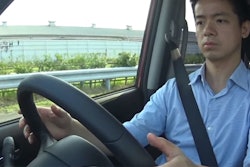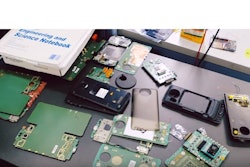Floating Traffic Tube
By 2035, the 680-mile trip from Kristiansand to Trondheim in Norway could drop from 21 hours to just 10 and a half thanks to a new proposed project.
Norway is riddled with fjords, geological sea inlets with steep cliffs beautiful, but highly inconvenient. That¹s why the country is considering creating submerged floating bridges within its fjords to reduce travel time.
The tentative plans detail two curved 4,000-foot long concrete tubes about 100 feet underwater. The tubes would be held up by pontoons on the surface and could possibly be bolted to the underwater bedrock for additional stability.
The benefits? Rough weather couldn¹t affect the structure underwater, and it would offer easier access to rural residents especially in an emergency. Plus, it would feel just like driving through any other tunnel.
The unanswered questions, however? Could workers really construct and maintain the massive underwater infrastructure? Additionally, the effect the wind and waves might have on the structure is still unknown.
Is this form of infrastructure a viable solution to a growing demand for faster travel? Let us know your thoughts by commenting below.
Ford Robot Employees
The robots are coming. For years, an almost systematic fear of automated factories and assembly lines has existed throughout the manufacturing industry. The narrative being that robotics will swoop in and (not just displace) but replace factory workers.
Although the waves of anxiety and optimism continue to ebb and flow throughout specific industries, more news continues to pop up that shows how robotics could actually make life easier for their human co-workers.
The latest example is from a Ford factory in France where humans and robots literally work alongside one another.
On the plant floor, Ford's collaborative robots place shock absorbers on the vehicle, then the human worker can use the robot to help lift and position the part in the right spot. This saves the worker from performing the difficult and tiring portion of the task but still necessitates the human worker¹s presence.
Essentially, depending on the specific task, robots and humans can literally swap tasks to carry out tasks more efficiently and with decreased risk of downtime or worker injury. Ford says collaborative robot like these is the real future of automation on the factory floor.
Not convinced that automated assembly lines won't hurt the manufacturing labor market?
Email us or leave your comments below.






















